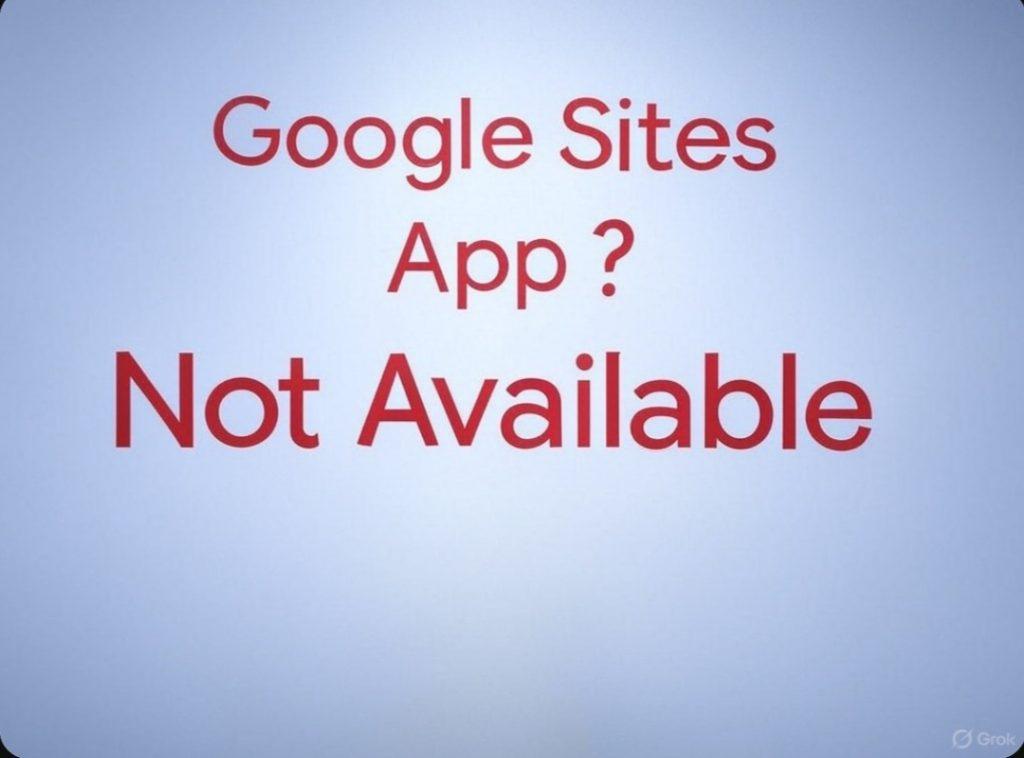In today’s digital landscape, having an online presence is crucial for individuals, businesses, and organizations alike. Google Sites emerges as a user-friendly and accessible platform for creating and managing websites without requiring extensive coding knowledge. Its intuitive drag-and-drop interface and seamless integration with the Google ecosystem make it a compelling choice for various purposes. This article delves into the power of Google Sites and explores the best ways to leverage its capabilities.
A word about my deviation from my mainstream Ayurveda – whicever tool I use to popularise Ayurvedic Services, my regular visitors have the right to know about it. This article is just for that.

Why make a Google Sites
Google Sites empowers users to build a diverse range of websites, from simple personal portfolios and project hubs to team collaboration spaces and small business websites. Its strength lies in its simplicity, allowing users to focus on content creation and organization rather than getting bogged down in complex technicalities. You can easily embed documents, spreadsheets, presentations, forms, calendars, and even YouTube videos directly from your Google Drive, creating a dynamic and interconnected online experience. The platform offers a selection of pre-designed themes and customizable layouts, providing a starting point for your design while allowing for personalization to match your brand or style.
The address of my Google Site :- https://sites.google.com/view/sundaram-ayurvedic-clinic/home
Screenshot of my Google Site :-

Best Ways to Utilize Google Sites:
Define Your Purpose:
Before you start building, clearly define the goal of your website. Is it to showcase your resume, promote a small business, facilitate team collaboration, or share information about a specific project? Having a clear objective will guide your design, content, and overall structure.
Plan Your Structure:
Organize your content logically with a clear navigation structure. Think about the different pages you’ll need and how users will move between them. Use descriptive page titles and ensure your navigation is intuitive and easy to follow. For instance, a small business website might have pages for “Home,” “About Us,” “Services,” “Portfolio,” and “Contact.”
Leverage Google Workspace Integration:
This is where Google Sites truly shines. Embed relevant files directly from your Google Drive to keep information up-to-date and easily accessible. Imagine embedding a Google Doc with meeting minutes for a team site or a Google Sheet showcasing product pricing for a business website. Use Google Forms for surveys, feedback collection, or contact forms. Integrate Google Calendar to display events and deadlines.
Focus on Clear and Concise Content:
While visuals are important, the heart of your website is its content. Write clear, concise, and engaging text that resonates with your target audience. Use headings, subheadings, bullet points, and short paragraphs to improve readability.
Optimize for Visual Appeal:
Utilize high-quality images and videos to enhance the visual appeal of your site. Google Sites offers options to adjust image sizes and placement. Choose a theme and color scheme that aligns with your purpose and brand. Ensure your site is visually consistent across all pages.
Keep it Updated:
A stagnant website loses its value over time. Regularly update your content with new information, blog posts, project updates, or announcements. This keeps your audience engaged and signals that your site is active and relevant.
Utilize Collaboration Features:
If you’re working in a team, Google Sites allows for seamless collaboration. You can grant different levels of editing permissions to team members, enabling multiple people to contribute to the website’s development and maintenance.
Optimize for Mobile Viewing:
While Google Sites automatically adjusts layouts for different screen sizes to some extent, it’s crucial to preview your site on various devices (desktops, tablets, and smartphones) to ensure a consistent and user-friendly experience for everyone.
Track Your Site’s Performance:
Integrate Google Analytics to monitor your website’s traffic, user behavior, and other valuable metrics. This data can provide insights into what’s working well and areas for improvement.

Is its Official App Available?
Currently, Google does not offer a dedicated official mobile application for Google Sites for either Android or iOS. Users primarily access and edit their Google Sites through a web browser on their computers or mobile devices. While the mobile browser experience is generally responsive, there isn’t a standalone app designed specifically for on-the-go site management.
Protection from Hacking:
While Google Sites benefits from the robust security infrastructure of the Google ecosystem, it’s essential to understand the security aspects and how to maintain the integrity of your site:
Leveraging Google’s Security:
Google implements significant security measures at the platform level to protect its infrastructure and user data. This includes protection against common web vulnerabilities.
Strong Google Account Security:
The primary line of defense for your Google Site is the security of your Google account. Ensure you have a strong, unique password and enable two-factor authentication (2FA). 2FA adds an extra layer of security by requiring a verification code from your phone in addition to your password when you sign in from a new device.
Careful with Collaborator Permissions:
When granting editing access to others, be mindful of the level of permissions you provide. Grant the minimum necessary access to each collaborator to limit the potential for accidental or malicious changes.
Review Embedded Content:
If you are embedding content from external sources, ensure those sources are reputable. Malicious code embedded from untrusted sites could potentially compromise your Google Site or its visitors.
Regularly Review Site Content:
Periodically review the content on your site to ensure everything is accurate and hasn’t been tampered with. Look out for any unusual or unauthorized additions.
Be Cautious of Phishing Attempts:
Be wary of any suspicious emails or links asking for your Google account credentials. Phishing attempts can try to trick you into revealing your login information, which could then be used to access and modify your Google Site.
Google’s Automatic Security Updates:
Google regularly updates its platform with security patches and improvements, which automatically benefit your Google Site.
While Google Sites offers a secure foundation, user vigilance and adherence to good security practices for their Google accounts are crucial in maintaining the protection of their websites. By understanding the platform’s capabilities and implementing these best practices, one can effectively utilize Google Sites to create a valuable and secure online presence.